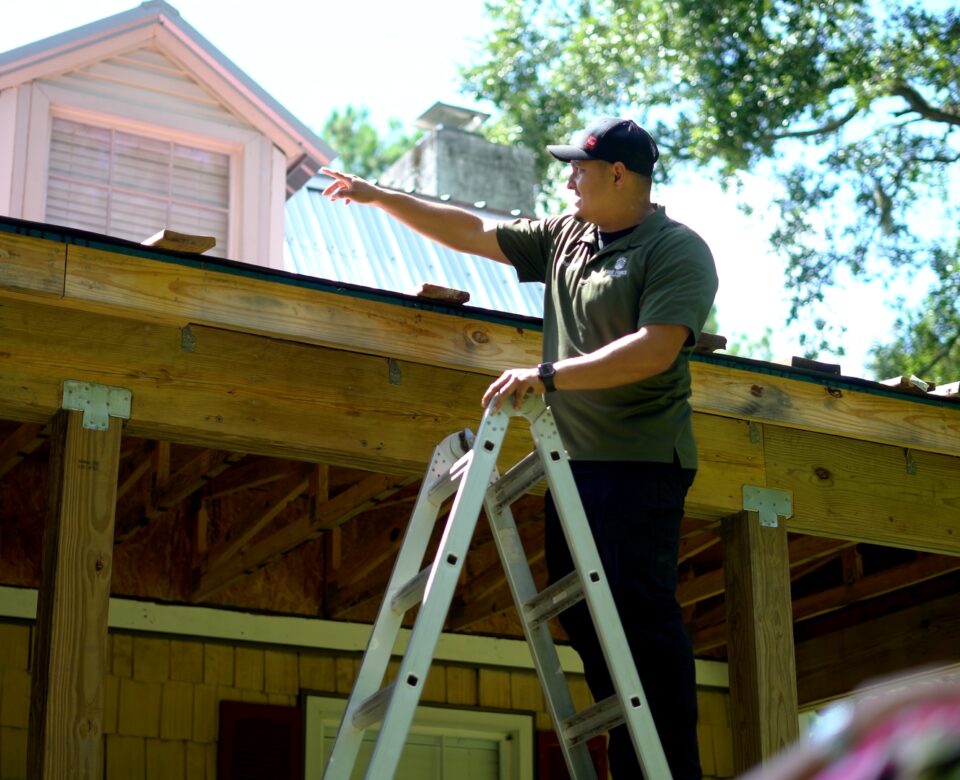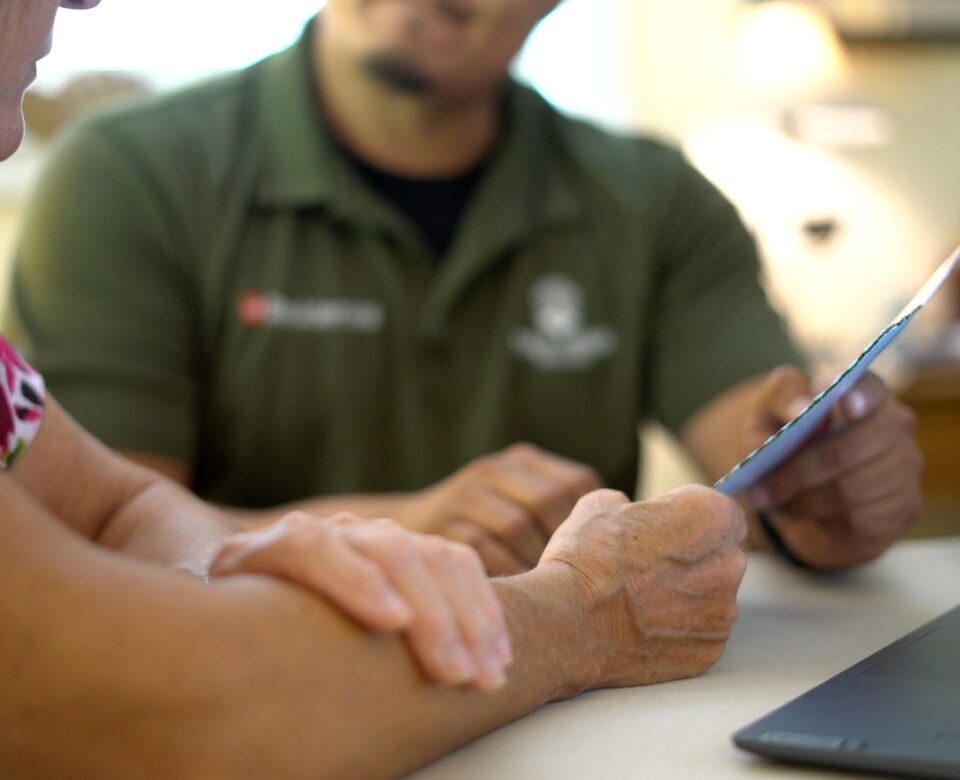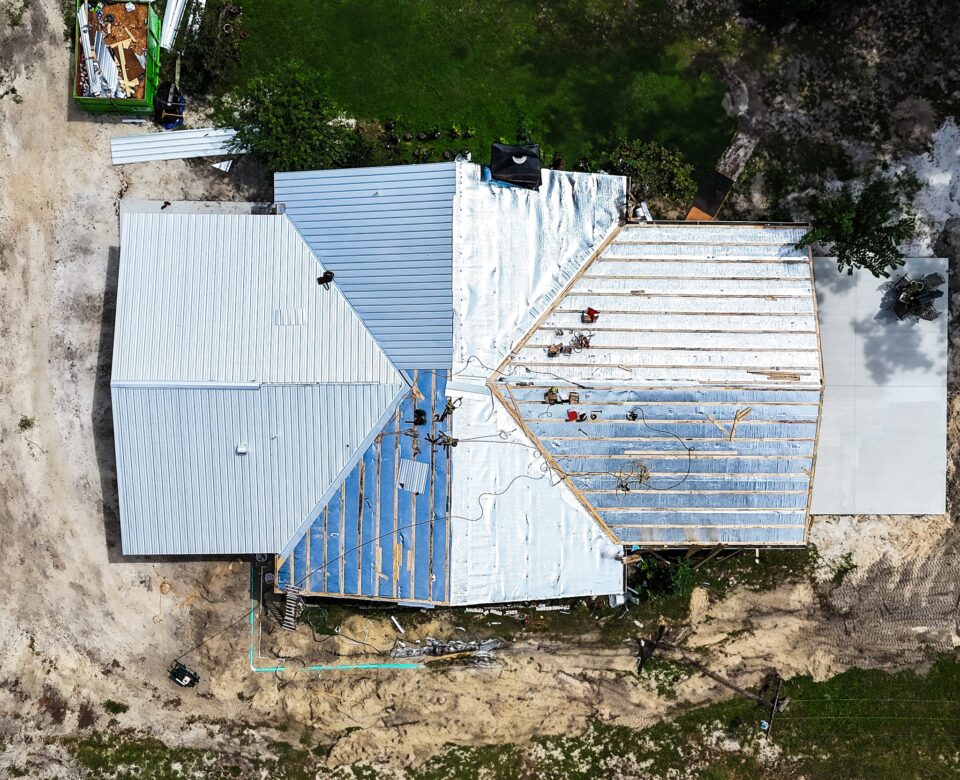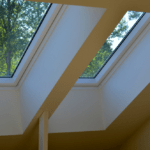
Unravel the Mystery: How to Confidently Find a Roof Leak
December 20, 2024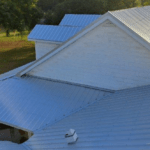
Metal Roofing Excellence in Gainesville
January 1, 2025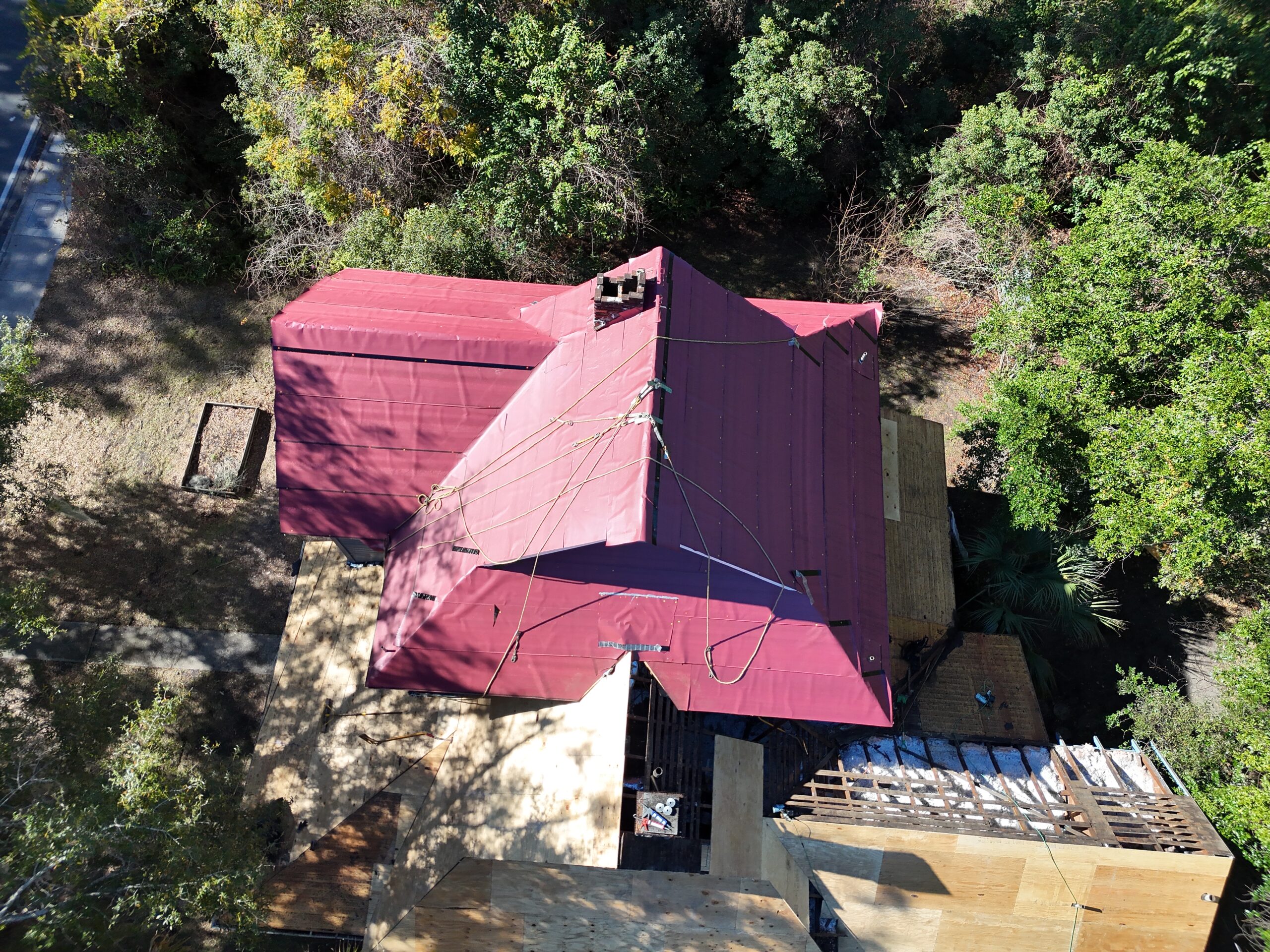
Identifying a Roof Leak
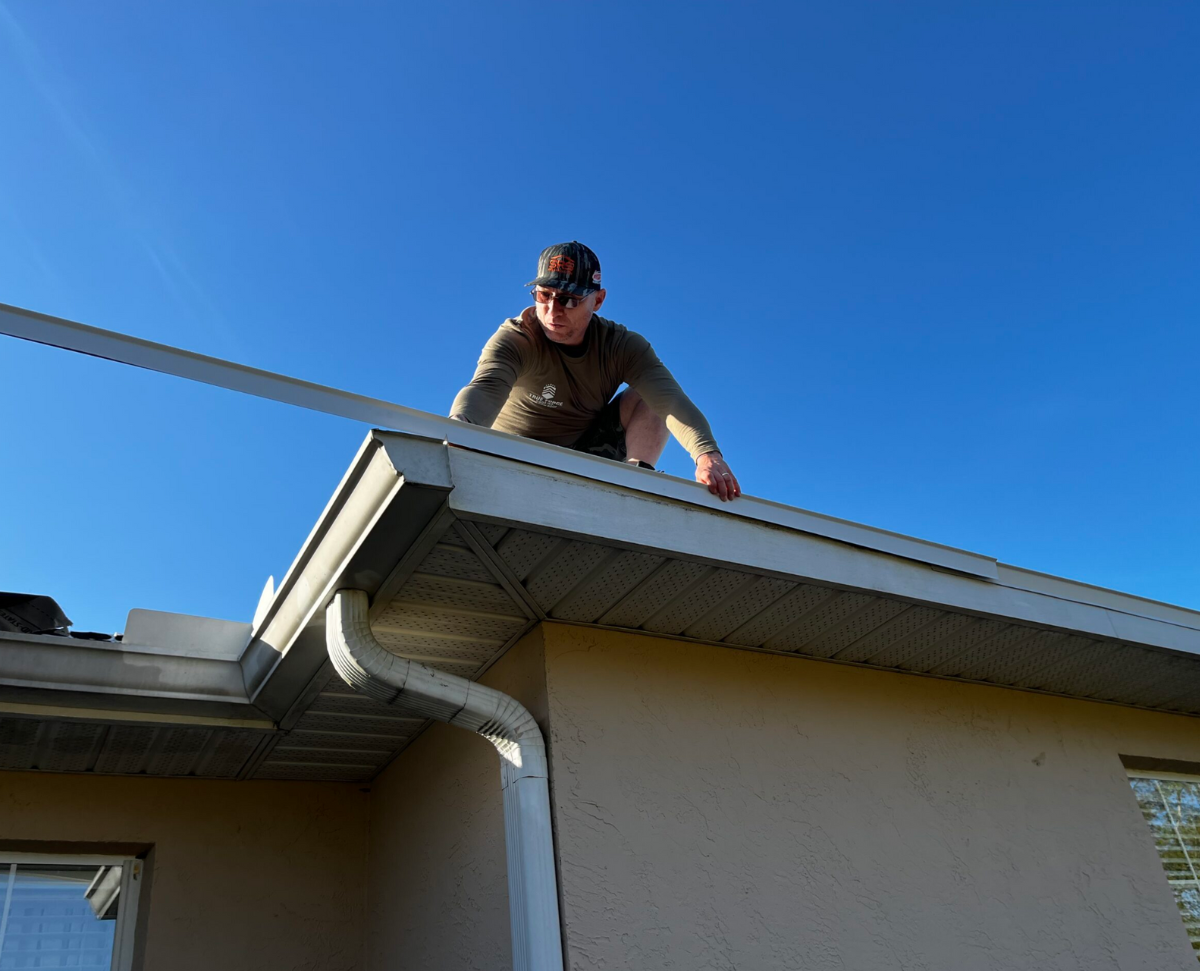
Let's face it, when water starts dripping from your ceiling like it's trying to join you for dinner, it's time to find out where that roof leak is sneaking in. Identifying the exact spot is crucial; it helps you dodge more significant water woes down the line.
Signs of a Roof Leak
Catching a leaky roof early can save you loads of hassle and repair costs. Some telltale hints your roof might be giving include:
- Mystery watermarks on your ceiling or walls that weren't there before
- The unwelcome music of raindrops hitting somewhere inside your home
- Furry patches of mold or mildew in the attic because nobody put a welcome sign for them up there
- Unexpected mini-pools forming in your attic or on your floors like you suddenly own an indoor water park
See any of this at your place? Jump on it fast before it gets messier.
Common Causes of Roof Leaks
Want to know why your house is trying to audition for Waterworld? Let's dive into some common culprits making those leaks happen:
|
Shingles that have gone missing, like socks in a dryer |
|
Flashing around vents and chimneys holding unwanted cracks |
|
Gutters and downspouts jammed up like a Black Friday line at a gadget store |
|
Skylights or vents that weren't allowed to sit right during installation |
|
Ice dams playing freeze-tag during winter |
|
Roofing material acting its age, showing signs of a midlife crisis |
Tackle these issues head-on, and you'll keep your roofing singing instead of sobbing.
By spotting the signals and reasons behind roof leaks, you gain the upper hand in the battle against moisture, keeping your house dry and happy.
Quick Fixes for Roof Leaks

When water starts raining inside your house, it's time to jump into action faster than pancakes flipping! Tackling a roof leak quickly keeps your home sweet home safe and dry. Here are a few DIY tricks to patch things up till the pros can roll in.
Patching Small Holes and Cracks
Those pesky itty-bitty holes or splits on your roof can let the sky pour down right into your living room, especially after a wild storm. One way to zip 'em up is by slathering on some roofing cement or a special patching goo.
Just pile it on the boo-boo, smoothing it all over like frosting a cake, to keep every drop outside where it belongs.
Clearing Debris from Gutters and Drains
Leaves, twigs, or, heaven forbid, your neighbor's frisbee, can turn your gutters into little waterfalls—and not in a good way.
Regular sweep-outs can keep your drains doing their job, whisking water away from your roof and out of your hair.
Keep those flow channels clear, and you can dodge indoor drizzle even when the storms hit hard.
Applying Roof Sealant
Tired of playing matchmaker with roof gaps and water drips? A little love and roof sealant can keep them apart. Just slather some sealant along seams, around any metal bits, and wherever leaks like to hang out.
Cover it like you're wrapping a present to keep the moisture out of your roof's business.
Handle leaks pronto with these band-aid solutions, and you're less likely to find yourself in a soggy situation before the roofing cavalry arrives.
Always remember: these are just temporary patches. You'll want the real heroes—professional roofers like True Force Roofing —to swoop in for the permanent fix.
After all, a stitch in time saves nine… or a whole lot more if we're talkin' roofs. Keeping your roof in ship shape ensures your home stands tall and dry, sidestepping those wallet-busting repairs down the line.
DIY Roof Leak Repair
When you find your roof springing a leak, it’s crunch time—take action quick to dodge more havoc on your home. Tackling a leaky roof yourself? It could save you a chunk of change, given that you’re down with DIY stuff. Let’s roll through some go-to tricks for mending that leaky roof on your own.
Using Roofing Cement
Roofing cement’s your basic go-to—it works like magic on pesky little leaks. Call it by another name—roof sealant or mastic—it’s your trusty sidekick for patching up those cracks, holes, and whatnot in your roofing. Here’s your quick-hitter how-to:
- Clean up around the leak to help it stick like it’s supposed to.
- Slap on a good dollop of roofing cement over your trouble spot, covering it nicely.
- Use a putty knife or even a trowel to smooth that cement and shove it into any gaps.
- Then, sit back as the cement sets and cures—as per the packet advice.
Roofing cement pulls double duty by sealing up water entry for now. But heads-up—it isn’t the long-term fix if things are looking serious.
Installing Flashing Correctly
Flashing's a must-have on your roof—it stops water from sneaking into sketchy spots like the joints, valleys, and seams. When leaks pop up near flashing, here’s your game plan:
- Peek at the flashing—look out for grim stuff like damage, rust, or where it’s come loose.
- Clean it up to get a stickier seal.
- Use roofing cement or similar stuff to firm up the seal around the flashing.
- Anchor that flashing right where it belongs, ensuring it’s flush with the roof.
By getting the flashing squared away, you’re locking down that water barrier and setting yourself up for fewer leaks down the road.
Addressing Shingle Issues
When shingles get banged up or bail, leaks can tag along. If water’s making its way through your shingles, here’s what to do before things get ugly:
- Eye those shingles for signs of harm—things like cracks, bits curling, or missing chunks.
- Swap out the wounded shingles with fresh ones that blend with your roof.
- Nail the new shingles down and seal those edges good and tight with roofing cement.
- Make sure they're snugly aligned and overlapping to fend off water.
Fixing up those shingle snags before they get hairy helps keep your roof intact and nixes leaks from causing bigger problems.
DIY roof fixes are gold when dealing with small-time leaks, but if things look grim or puzzling, call in the pros. Safety on the roof’s non-negotiable, so when in doubt, ring up a roofing expert for the heavy-duty stuff.
When to Call a Professional
Dealing with a leaky roof can be a real pain, right? Sometimes, it's just beyond what you can handle with a YouTube tutorial and a toolbelt.
That’s when you need a roofing pro to step in. Spotting when you need this help and picking the right person for the job is the key to getting your home back in shape without too much fuss.
Signs You Need Professional Help
Not every roofing fix is a weekend DIY project. Sometimes, it's smart (and essential) to call in those who know their way around a shingle. Here’s how you know it’s time to bring in the experts:
|
Signs |
Description |
|
Widespread Damage |
If your roof looks like it cried through a big patch, with puddles or droopy ceiling panels, someone with serious skills needs to tackle it. |
|
Structural Issues |
When your roof’s skeletal system starts giving up, with parts like rafters rotting or the deck sagging, you need a pro to stop things collapsing down. |
|
Safety Concerns |
If your roof needs a mountaineer rather than a ladder, save the broken bones and call someone with the gear and know-how to safely do the job. |
|
Persistent Leaks |
After you’ve tried, and retried to plug that leak, it keeps coming back. Time to hand it over to someone who can find that pesky source for good. |
Any of these sound familiar? Don’t wait. Protect your place by getting someone who knows roofing like the back of their hand like True Force Roofing.
Signs You Need Professional Help
Getting the right contractor on board can save you not just money, but peace of mind too. Here’s how to pick one that won’t leave you high and dry:
- Check Credentials: Make sure they’re licensed, insured, and bonded. This means they’re playing by the rules and have got you covered if things go south. True Force Roofing is Licensed, Insured & Bonded
- Seek Recommendations: Hit up friends, family, or even chat up a neighbor who’s had work done. Firsthand experiences are the real golden nuggets when picking your roofer.
- Research Reviews: Hop online and dive into reviews. Sites like Yelp or the Better Business Bureau can be your best friends in finding out who’s legit and who’s not.
- Request a Written Contract: Before any hammer hits the nail, seal the deal with a written contract spelling out the whens, whats, and how much. This makes sure everyone’s on the same page. True Force Roofing creates written contracts.
Picking your contractor with care means you’ll have a professional tackling those leaks and giving your roof the long-lasting fix it deserves.
Pick The Right Roofer The First Time
Winter roof emergencies require a skilled and reliable roofer who understands the urgency and unique challenges of the season. True Force Roofing offers:
Fast, 24/7 response times to address emergencies no matter when they arise.
Specialized winter services for handling cold-weather repairs.
Local expertise and reliable support to keep your home safe and secure all winter long.

